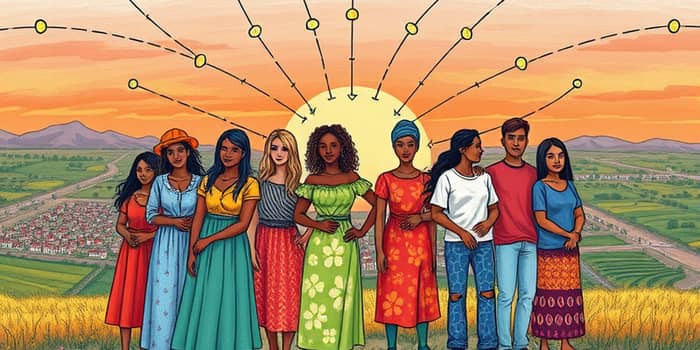
The concept of financial inclusion is not just about opening bank accounts; it's about the promise that every person, regardless of background or circumstance, can participate in the economy and build a more secure future. Over the last decade, global account ownership has leapt from 42% to 79%, a transformation driven by technology, policy innovation, and unwavering vision. Yet, behind these numbers lie hurdles that, if unaddressed, threaten to leave the most vulnerable further behind. This article explores how stakeholders—from governments to fintech innovators—can forge a path toward universal access to and usage of financial services that truly empower individuals and communities.
As we move beyond access into the realm of actual impact, the agenda has expanded to emphasize not just agency but also financial health and well-being. Savings habits, responsible borrowing, and protection against unforeseen shocks define whether inclusion translates into resilience. In this narrative, we chart the progress made, dissect the remaining barriers, celebrate emerging solutions, and outline tangible steps to bridge the gap between aspiration and reality.
Financial inclusion has evolved from a niche development goal to a core pillar of economic policy worldwide. Initiatives like the Global Findex surveys reveal that digital tools—especially mobile phones, which 86% of adults already own—have been game changers. Mobile money platforms in Africa have demonstrated how mobile money and digital lending can onboard unbanked populations, while open banking infrastructures in advanced markets have created space for new entrants and tailored offerings.
Parallel to this technological surge, large-scale programs such as the World Bank's ID4D have laid the groundwork for legal digital identities. These universal ID systems reduce friction in opening accounts and verifying users, ensuring that even those in remote regions can access services instantly. Meanwhile, advancements in data science and AI leverage transactional footprints to offer more accurate and inclusive credit scoring, enabling customized financial products for smallholder farmers, microentrepreneurs, and gig workers.
Despite remarkable strides, the journey is far from over. A glaring concern remains the gender gap: women consistently have lower formal inclusion rates due to social norms, lower digital literacy, and limited control over resources. Targeted initiatives have reached 87 million women in certain regions, but their male counterparts receive uneven attention, highlighting the urgency of balanced efforts.
Another critical challenge is the underrepresentation of people with disabilities. In Kenya, for instance, only 77.9% of persons with disabilities are financially included compared to 84.8% of the general population. Tailored solutions are scarce, and the lack of detailed data often sidelines PWDs when designing products. To empower every individual, stakeholders must mainstream gender- and disability-disaggregated data into strategies and designs.
Moreover, as the financial ecosystem digitizes, risks of cyber threats, over-indebtedness, and exclusion by algorithm become more pronounced. Ensuring consumer protection and data privacy is as important as broadening access.
As the sector matures, the measurement yardstick is shifting from “accounts opened” to tangible outcomes in education, health, and income generation. Financial inclusion is now recognized as a catalyst for broader development goals: reducing poverty, promoting gender equality, and combating climate change. Indeed, green finance products that embed environmental considerations into lending are gaining momentum, supporting sustainable farming and renewable energy adoption.
Crucially, recent studies dispel misconceptions that inclusion undermines bank stability. Data shows that well-regulated expansion into underserved segments correlates with stronger capital buffers, healthier profitability, and sustained GDP growth. This alignment of financial inclusion with macroeconomic stability underlines that smart regulation and innovative outreach can go hand in hand.
Bridging the gap in inclusive finance requires a concerted effort across sectors and geographies. Policymakers, private institutions, and community organizations must collaborate to craft solutions that are both scalable and sensitive to local realities. By connecting technological innovation with purpose-driven policy, we can ensure that financial services become a springboard for human potential.
The story of inclusive finance is a testament to what can be achieved when vision meets action. It challenges us to imagine a world where every individual—regardless of gender, ability, or location—can access financial tools that safeguard their future and amplify their voice. Today, the road ahead is clear: bridging the gap is not just an economic imperative, but a moral one. Let us all pledge to keep pushing the boundary of what inclusion can mean for the billions still waiting for their turn.
References





